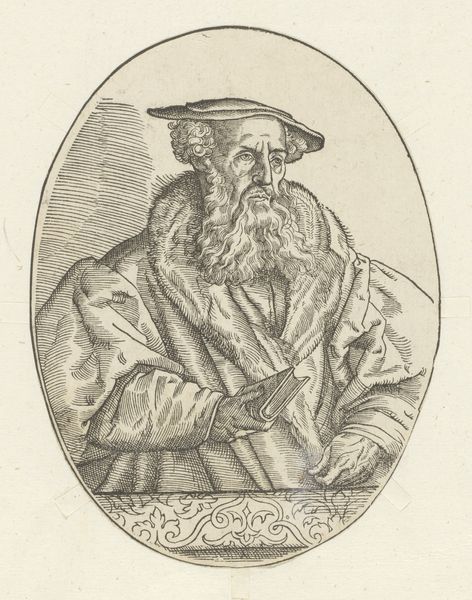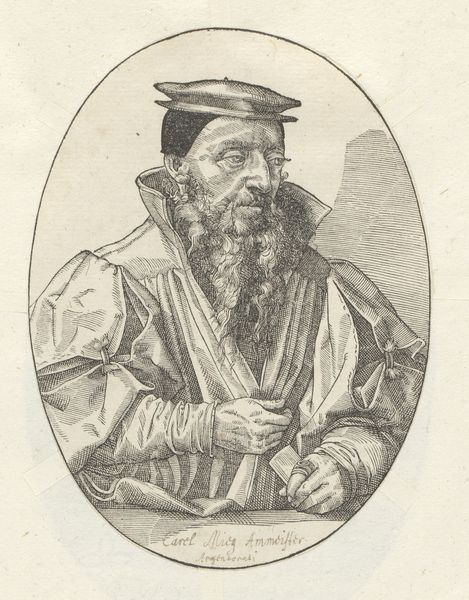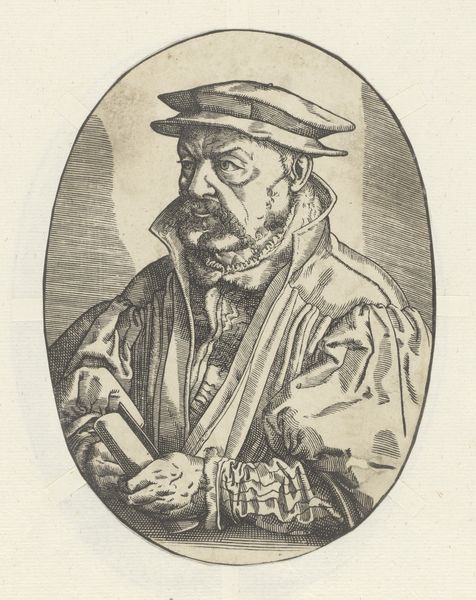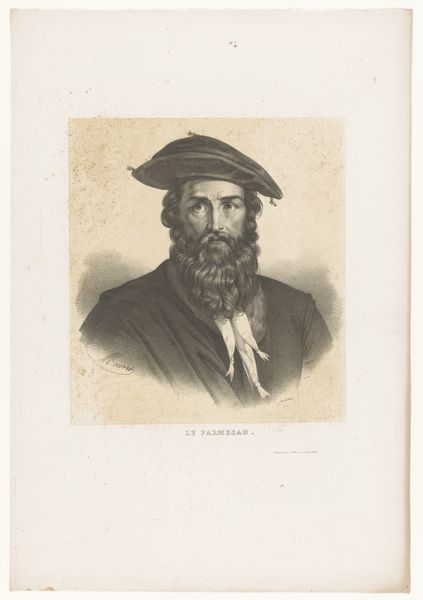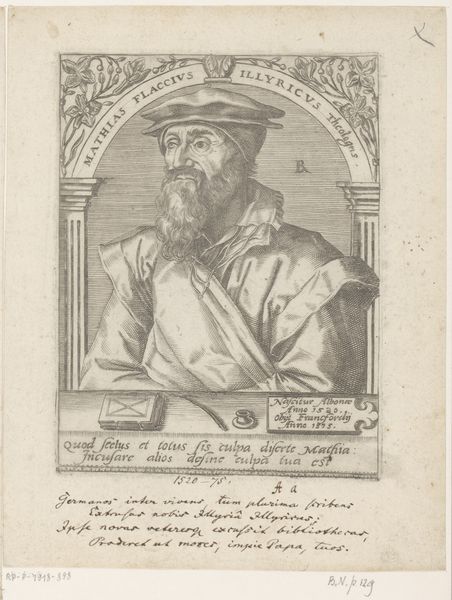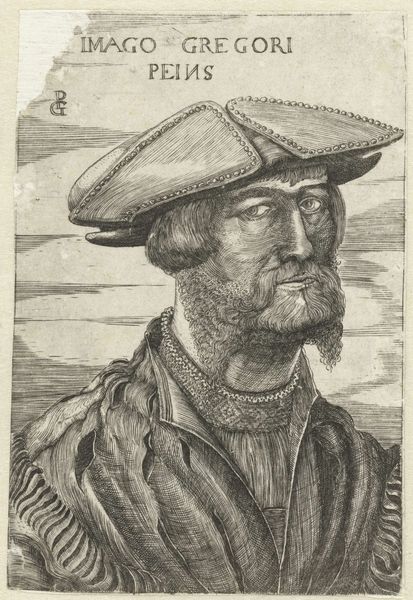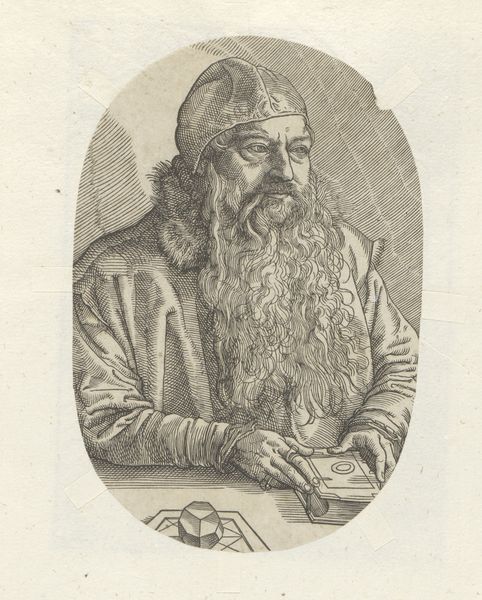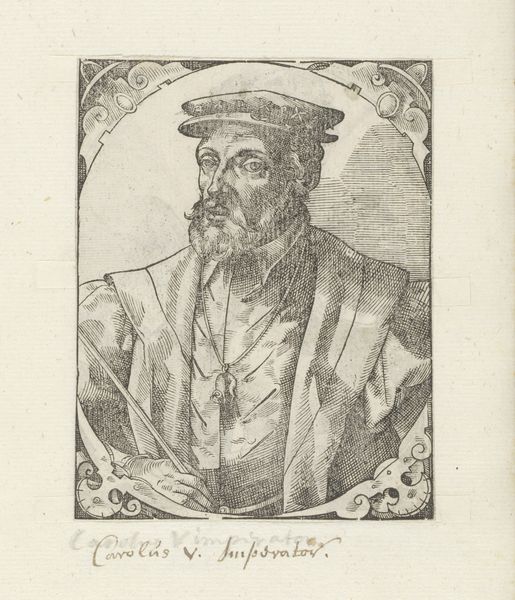
drawing, print, engraving
#
portrait
#
drawing
#
medieval
# print
#
11_renaissance
#
line
#
portrait drawing
#
engraving
Dimensions: height 150 mm, width 112 mm
Copyright: Rijks Museum: Open Domain
Curator: Here we have an engraving titled "Portret van Matthias Flacius," likely created sometime between 1549 and 1584. It presents a striking image of a bearded man, rendered with remarkable detail in stark monochrome. What catches your eye? Editor: The gravity, definitely the gravity. He looks like he's carrying the weight of the world, or at least, wrestling with some serious theological questions. There’s an intensity in his gaze, but also… exhaustion? Curator: You know, "Portret van Matthias Flacius" portrays a significant Reformation figure. Flacius was a staunch theologian, known for his polemical writings, so the gravity you sense is very appropriate! The artist captured his intellectual rigor and perhaps, yes, the toll of constant debate. The intricate linework speaks to the engraver's skill, look at the folds of his garments, the texture of his beard. It gives such depth to the print. Editor: Absolutely, the technique is undeniable. But I wonder about the symbolism, about the story it tells beyond just a likeness. Who was this man, and why preserve his image this way? I see a pendant and think about not only his religious affiliations, but what those might imply. Is he pushing against existing norms? What sociopolitical upheaval surrounded this man, which might inform why his depiction needed to exist in printmaking form? Curator: Fascinating point! This was the Reformation period. Flacius defended a more radical, anti-Catholic view within the Reformation movement, and his books were controversial, burned publicly. He lost positions and faced exile. Thus, images such as this were a way to record likeness, and to share an alignment with political views of the reformation to which Flacius adhered. It almost makes this artwork a declaration of alliance with Flacius' controversial positions. Editor: I suppose that this wasn’t merely an aesthetic representation of a historical moment; rather, it embodies a visual stand. A single image used for social justice efforts, even today. Thinking of this, now, the lines of exhaustion across Flacius’s face seem that much more intense. The fact that they were meticulously drawn—it gives us insight. It says something profound. Curator: So, an intense experience captured by a highly skilled hand, making it more than just a picture—but a story. It's a testament to how art can reflect historical conflict while evoking our present emotional responses to this very day. Editor: Indeed. It highlights how even seemingly simple portraits, like this one, can encapsulate entire movements, political ideologies, personal sacrifices. Art as social memory—very moving!
Comments
No comments
Be the first to comment and join the conversation on the ultimate creative platform.
